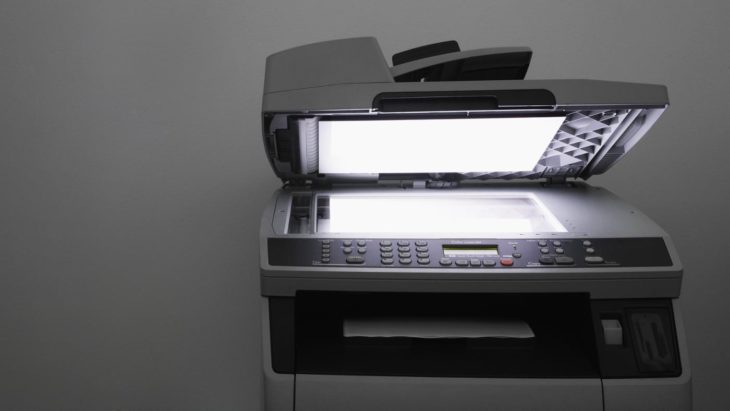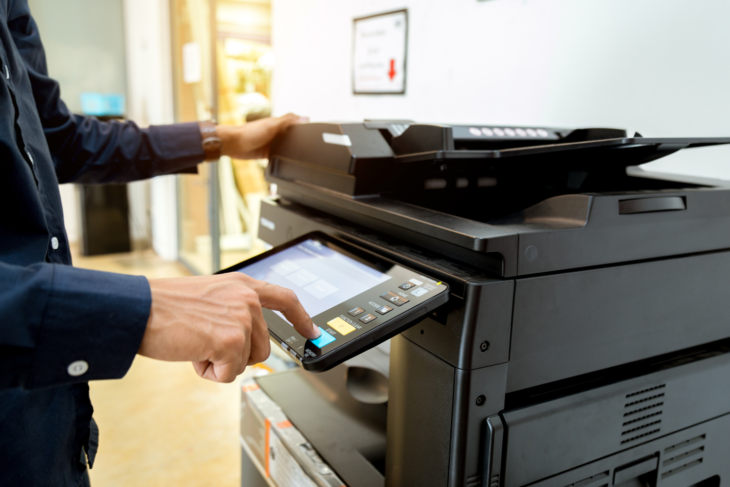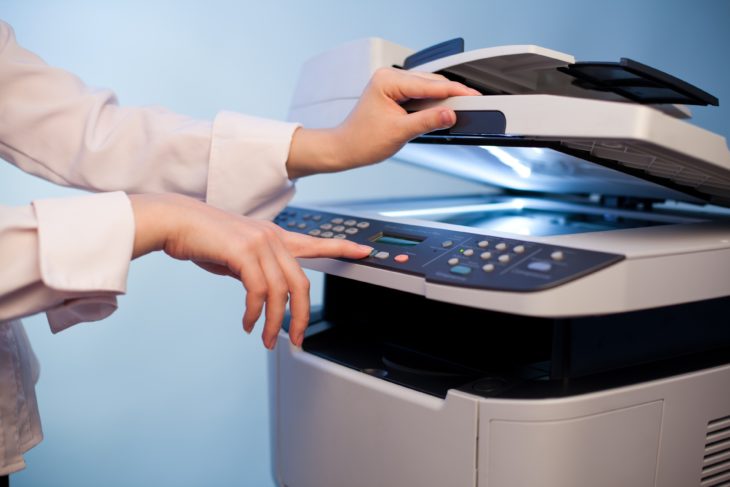You might think that copy machines are very simple – you take a document, put it on the glass screen of a copier, a green light passes laterally beneath the glass and an identical copy of the document you placed on the screen comes out of the side of the machine after a few seconds.
But have you ever stopped to think what really goes on underneath the glass? Do you presume it’s just magic? Admittedly, a copy machine is a complicated piece of machinery. Here is our very simple guide to copy machines:
Contents
The Invention of the Photocopier
Chester Carlson designed the copy machine in 1938, but he named the process electrophotography. It took a decade for his invention to be known, and in 1948 name electrophotography was changed to xerography. In 1949, the company Xerox was formed and they invented the first plain paper photocopier – Model A.
The capabilities and functions of modern copiers are very different from the original Xerox machine, with the ability to send faxes and scans, create booklets, staple documents, and print on two sides of the page, all at the touch of a button.

Source: fsm
So, How Do Copy Machines Work?
After you have put the master copy on the glass screen of the copy machine and pressed the big green button, the machine takes many steps before your copy comes out.
Copiers work on the principle that ‘opposites attract’
The toner is a powder that is used to create printed images and texts on paper. The powder is negatively charged, therefore it’s attracted to something positive.
The drum, which is found in the heart of a copy machine, is positively charged by static electricity.
An image of the original copy is transmitted onto the drum with the help of a laser. The lighter portions of the image lose their charge and become more negative, and the black areas of the image retain a positive charge.
The toner sticks to the black positively charged areas of the image on the drum. For colored copies, the drum attracts the yellow, magenta and cyan toner. From these three colors, many colors can be formed.
The resulting toner on the drum is moved to a piece of paper, which has a higher negative charge compared to the drum.
The toner is then liquefied and fused to the paper using pressure and heat rollers. This is why the paper that comes out of a copy machine is warm.

Source: thebalancesmb
Should I Lease or Buy a Photocopier?
Reasons to Lease
1. No depreciating assets
When you lease multifunction photocopiers, you’re not stuck with machines that lose value over time.
So you can have the latest copy machine in tiptop condition.
2. Cash Flow
If cash flow is a priority then leasing is ideal for you.
Buying a copy machine creates a large expense right away, but leasing a copy machine allows for small monthly costs. It’ll also improve your credit line.
Additionally, monthly payments for equipment required to conduct your everyday operations can be written off as a business expense. So, it is possible that deciding to lease photocopiers could save you a considerable amount of money even if the lease payments add up to more than the cost of the copy machine itself.

Source: businessnewsdaily
3. More Options
Leasing also lets you get larger and more advanced devices than you otherwise wouldn’t be able to without a huge capital outlay.
4. No Maintenance Concerns
Generally, lease agreements include a maintenance agreement and the cost is often included in your monthly payments. Leasing a copier eliminates the need for budgeting for photocopier maintenance costs since most of the time it is included within the lease payment.
5. Device Upgrades
When these are available you might be able to upgrade, similar to your mobile phone plans. This keeps you free of antiquity and keeps you updated
These are compelling reasons to lease, so why would you opt to buy?
Reasons to Buy
1. Tricky to Opt-Out
If you’re in a lease agreement, it is very difficult to leave it before term.
2. Low Usage
If you don’t do a lot of printing then getting a smaller copy machine might be a better option than leasing, even a more premium copier.
3. Length of lease
If you think you might need photocopier only for a short time, you might need to purchase, as a standard lease can be lengthy.

Source: ais-now
Conclusion
It is important to assess the exact needs of a business before making a decision about whether to lease or buy business equipment and, if deciding to lease the equipment, it must be made sure that the details of the service agreement are clear and fair.
Deciding to take out a lease agreement can save a business a lot of money and give peace of mind in today’s uncertain financial climate, so long as a reliable and credible supplier like photocopierguide.co.uk is used.
